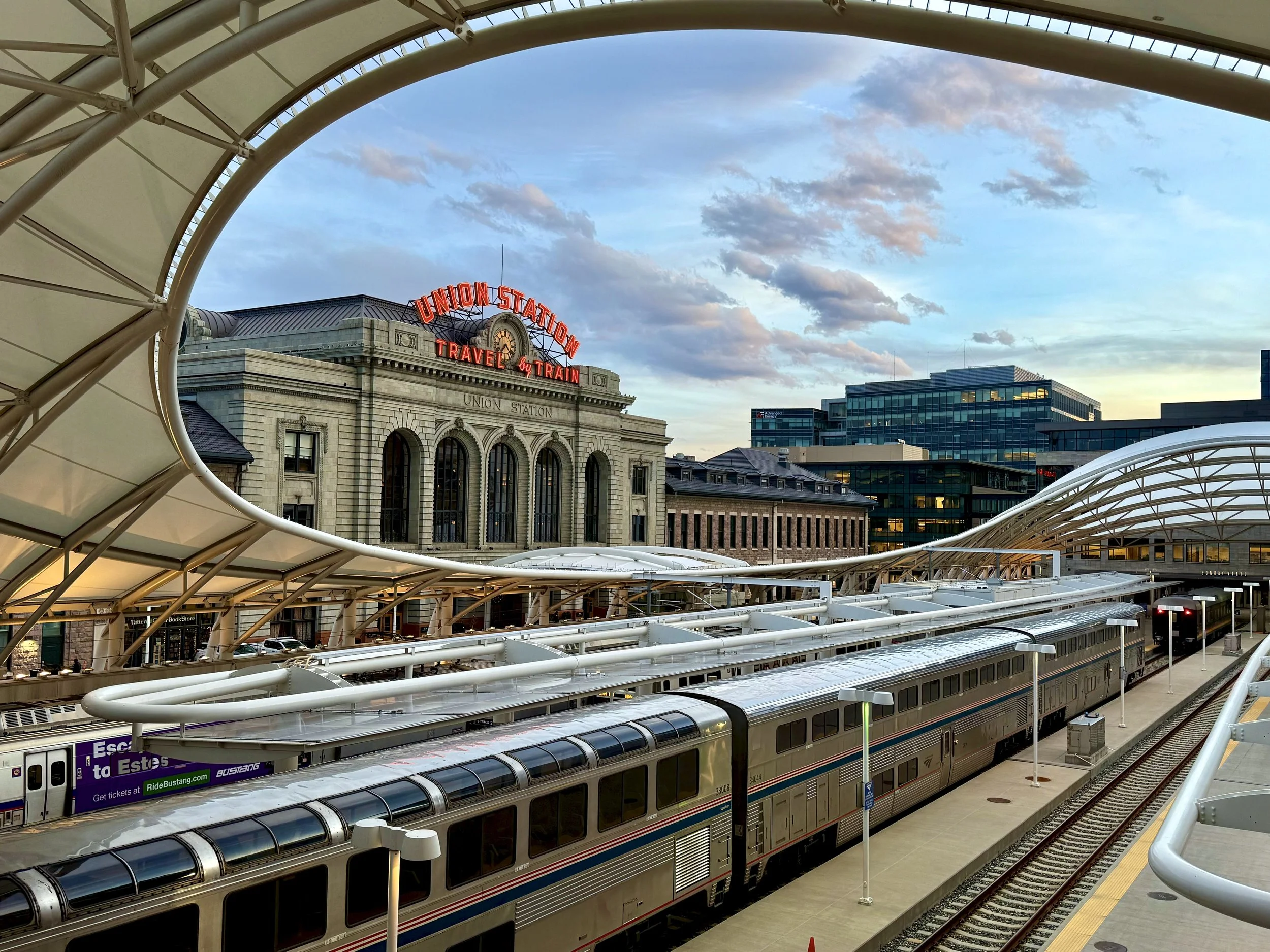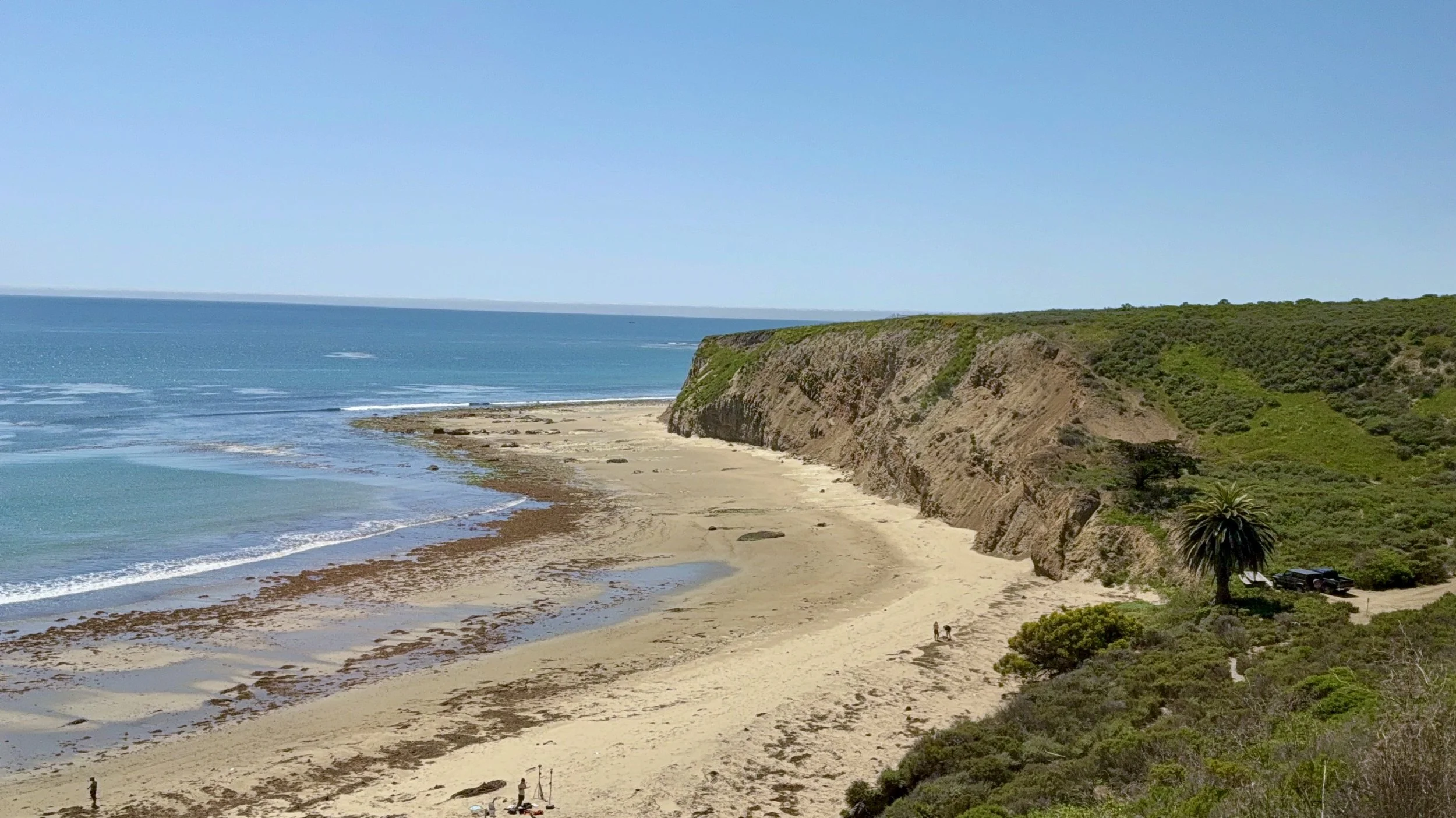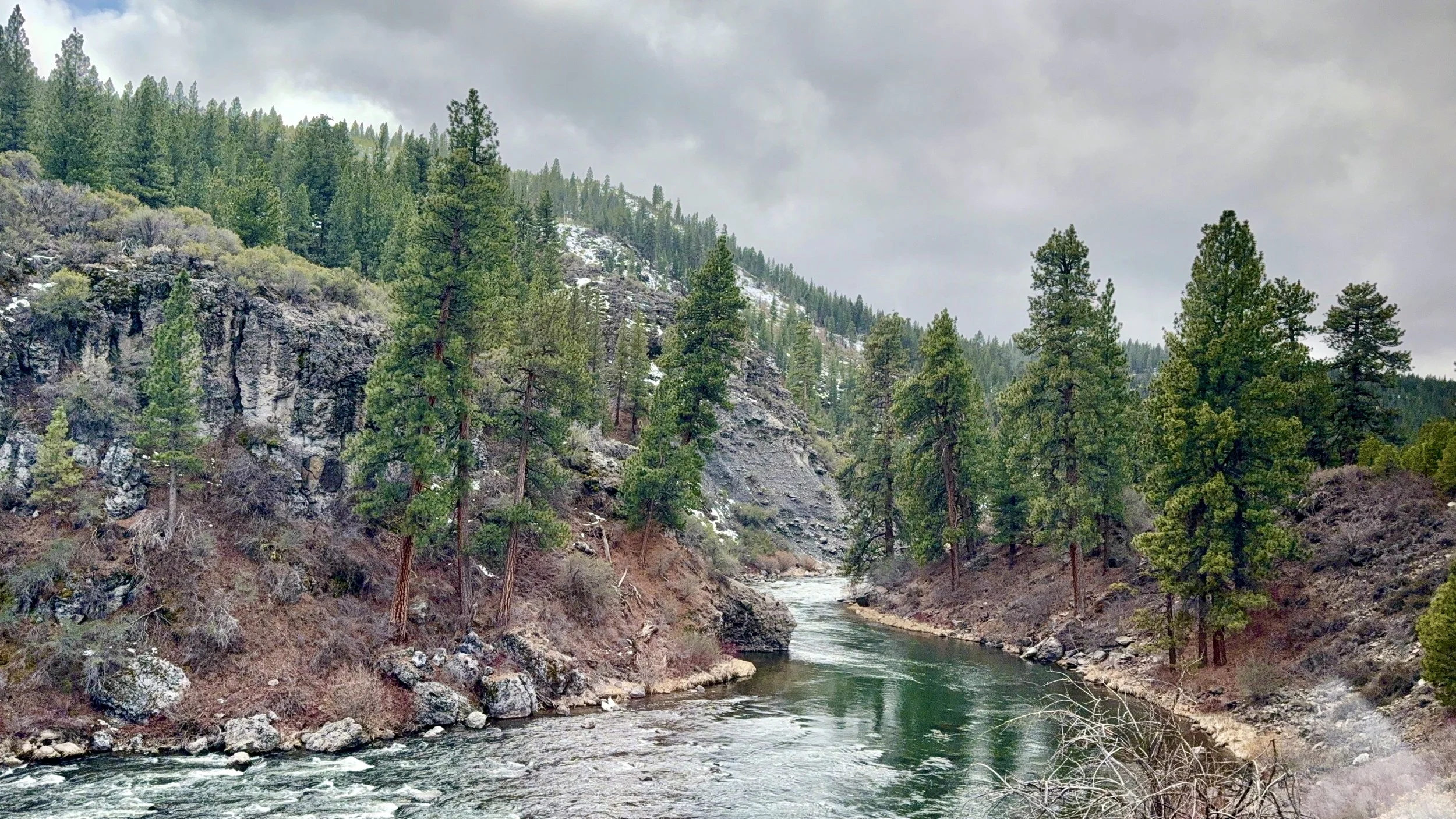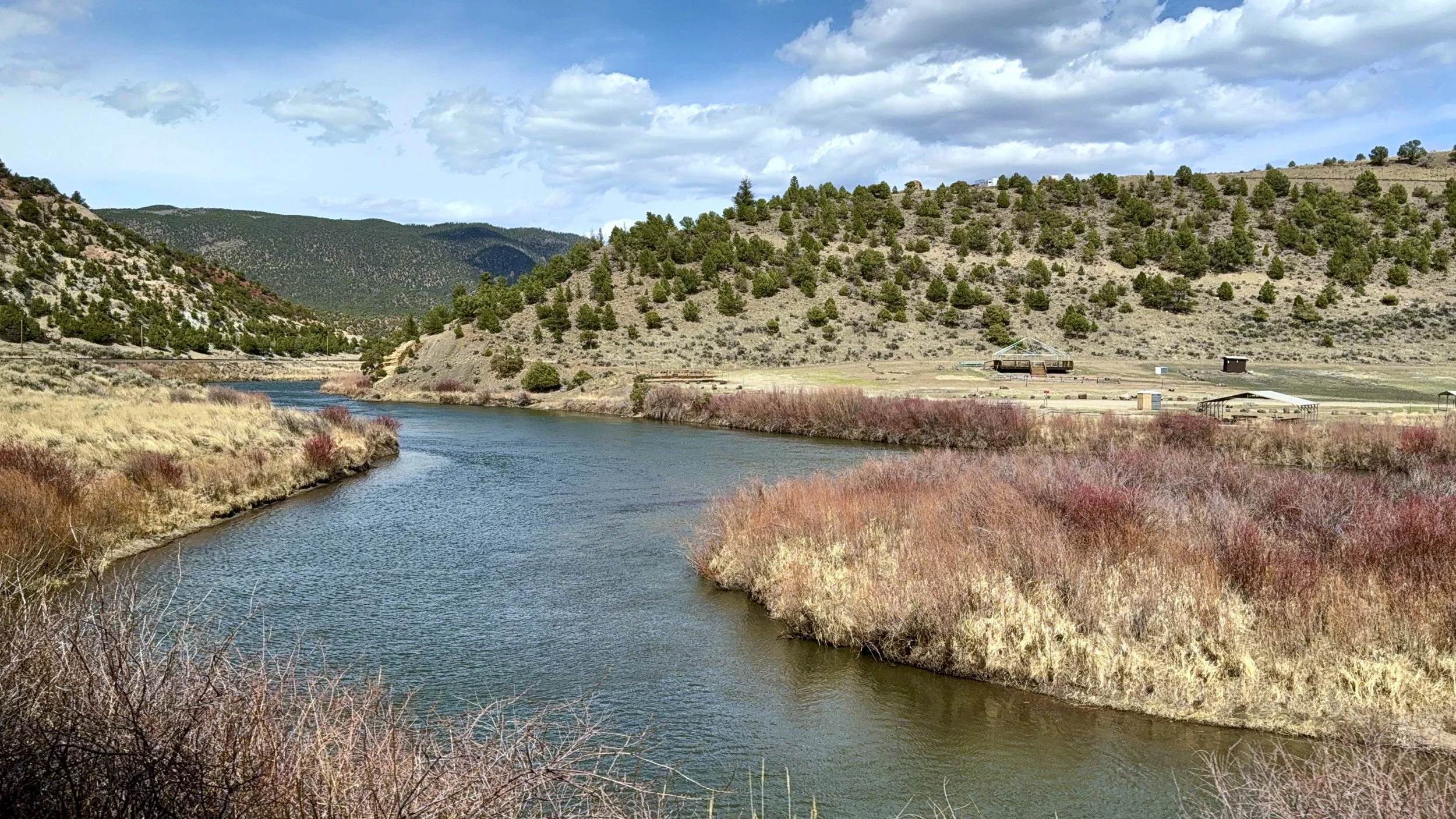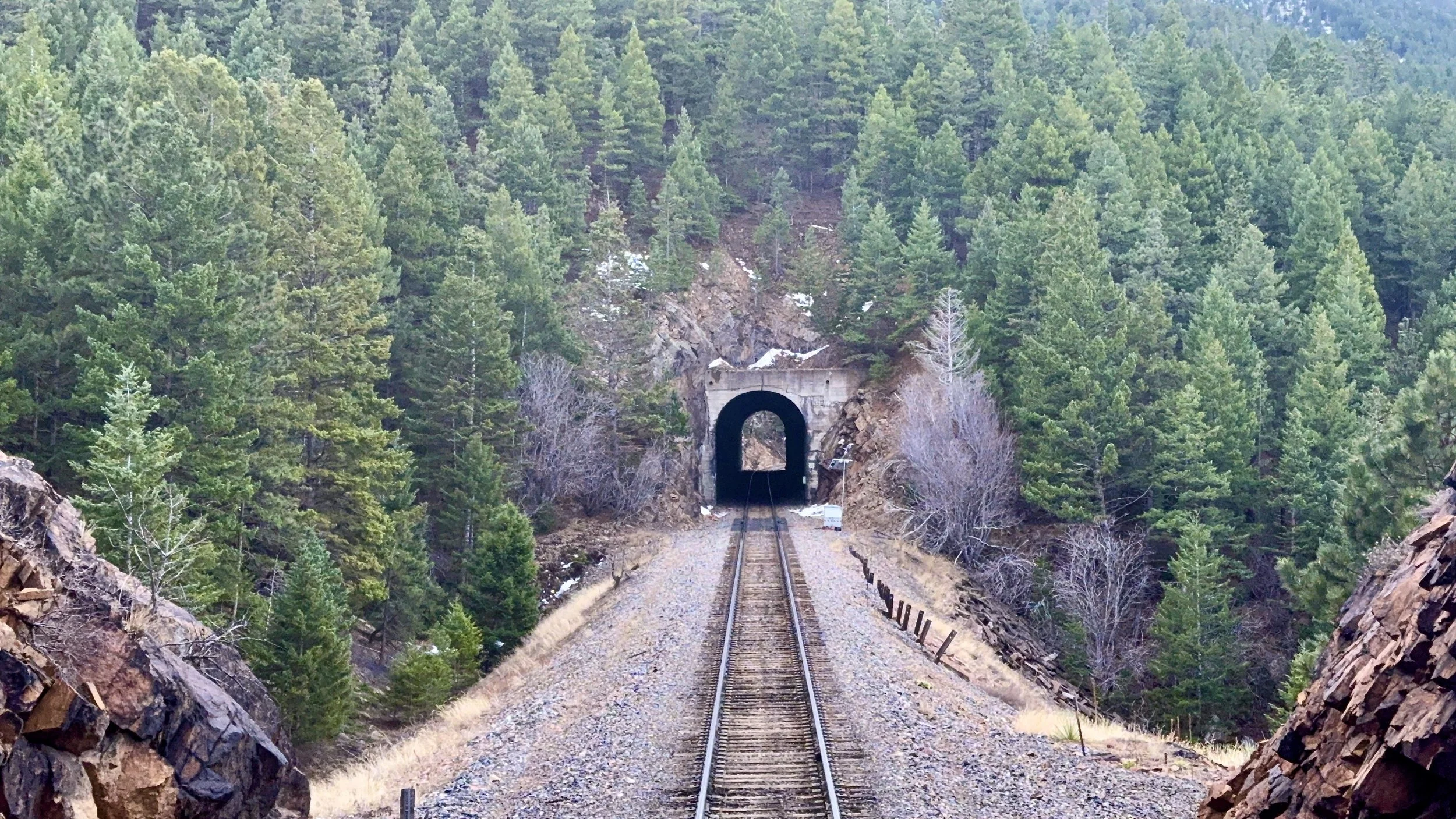Crossing America by Train: My Amtrak Experience (And Why I’d Do It Again)
Denver Union Station
In a world where speed is everything, I decided to do the opposite—I slowed all the way down and boarded a train across the United States.
Instead of chasing departure gates and security checkpoints, I hopped aboard Amtrak and rode from Chicago to Los Angeles, watching the country unfold one mile at a time. No TSA lines, no middle seat squeeze, no turbulence. Just me, the rails, and the incredible beauty of America rolling past my window.
🎥 Want to see the journey in action? Check out the trip here:
▶️ Southwest Chief: Chicago to LA
▶️ Coast Starlight: LA to Oakland
From the Windy City to the Wild West
The adventure kicked off at Chicago Union Station, where I boarded the Southwest Chief, one of Amtrak’s legendary long-distance routes bound for Los Angeles.
Right away, I knew this would be different. This wasn’t just transportation—it was a front-row seat to the ever-changing American landscape. Over three days, the train slices through:
Day 1: Illinois, Iowa, Missouri, and Kansas
Day 2: Colorado, New Mexico, and Arizona
Day 3: California
We passed open prairies, dusty plains, red rock canyons, and sleepy little towns. One of the most memorable moments came at Raton Pass in New Mexico—the highest elevation station on the Southwest Chief at over 6,700 feet. Blink and you might miss it, but I had my camera mounted, capturing every turn and twist.
Eventually night fell and it was time to of to sleep. Sleeping in coach wasn’t glamorous, but the rhythm of the rails eventually rocked me to sleep. I woke to dawn light spilling over the quiet plains of Colorado. Moments like that made up for the stiff neck and a slightly squished backpack at my feet.
Some favorite stops along the route:
Kansas City Union Station – grand, historic, and beautiful in the quiet of the late evening
Albuquerque – a chance to stretch, breathe in the desert air, and grab a snack
Flagstaff – brisk mountain air and beautiful station
Los Angeles Union Station – a beautiful Art Deco icon to close out this leg
Pacific Coast
From Desert Dust to Coastal Waves
After a couple nights in Valencia, California, including a visit to Channel Islands National Park, I was back at LA Union Station to board the Coast Starlight.
This stretch was pure contrast. The desert faded behind me, and the Pacific Ocean laid ahead. Cliffs dropped into crashing waves, then opened into beach towns and sun-drenched farmland. We rolled past Santa Barbara, San Luis Obispo, and Paso Robles, each more scenic than the last.
There were parts where the train felt like it was floating along the cliffs, and others where fog curled between the hills. Sunlight would break through just in time to spotlight a farm or vineyard.
I got off in Oakland for the night—showered, slept in a bed that didn’t sway, and had a proper meal. It was a brief but welcome reset before the most stunning leg of the trip.
Mountains of Colorado
The Grand Finale: California Zephyr to Chicago
The next morning, I boarded the California Zephyr in Emeryville. For this final stretch, I upgraded to a roomette—and it was absolutely worth it.
Having a private space meant I could stretch out, nap, read, and take in the views without interruption. Meals were included, and there’s something almost surreal about sipping ginger ale while watching the Sierra Nevadas pass around me.
The Zephyr is often called the most beautiful train ride in America—and I understand why.
We climbed through the snowy Sierra Nevada mountains, twisted into the Colorado Rockies, and descended into vast plains and golden fields. At one point, the train curved so dramatically I could see both the front engine and the last car snaking through the mountains.
We passed:
Fraser–Winter Park, CO – the highest stop in the entire Amtrak system at 8,574 feet
Moffat Tunnel – a 6.2-mile feat of engineering through the Rockies
Sugar Bowl Resort – one of the oldest ski resorts in the Sierra Nevadas
The Goldola at Palisades Tahoe – the only ski lift gondola in the U.S. that crosses over active train tracks
Every window framed a postcard. Rivers sparkled in the sun, forests looked like paintings, and snow brushed the tops of the evergreens. It was peacefully beautiful.
The California Zephyr passes through a series of 6 canyons—each one revealing a different side of the American landscape:
Truckee River Canyon – This stretch runs through Nevada as the train hugs the river and cuts through narrow rock corridors near Reno.
Humbolt River Valley — In northern Nevada, the train weaves through rugged desert river canyons.
Ruby Canyon – Located on the Colorado–Utah border, Ruby Canyon is a showstopper with glowing red rock walls that you can only see by train or raft.
Gore Canyon – A rugged, winding path carved by the Colorado River, Gore Canyon is wild, remote, and impossible to access by car.
Byers Canyon – Just before reaching Kremmling, the train rides along jagged rock faces and open river bends.
Fraser Canyon – Near Winter Park, this scenic stretch features forested slopes and snow-dusted evergreens.
The Joys (and Realities) of Train Travel
It wasn’t always smooth sailing—trains don’t run on airline schedules, and delays are part of the journey. Sleeping in coach required a bit of strategy; a good pillow and a warm blanket made all the difference. Thankfully, the power outlets worked without a hitch, so I was able to keep my devices charged and my camera rolling the entire time.
Speaking of the camera—people noticed. I mounted a GoPro to the window, and it drew plenty of attention. Fellow passengers would ask, “Are you filming a documentary?” or “What are you going to do with all those photos?” It sparked some of the best conversations on the train—people genuinely intrigued by the idea of capturing the journey as an experience in itself, not just the destinations.
My travel jacket turned out to be a conversation starter too. The back is covered in patches from every country I’ve visited, and nearly everyone who saw it asked the same thing: “Have you really been to all those places?” What started as a personal souvenir quickly became a way to connect—an unexpected passport to human interaction that made the long miles feel shorter.
Would I Do It Again? Absolutely!
Crossing the country by train isn’t just about seeing the sights—it’s about feeling the space between them. It slows you down in the best way. It gives you room to breathe, time to think, and opportunities to connect—with strangers, friends, with the landscape, and yourself.
Would I do it again? In a heartbeat. There’s something magical about riding the rails. And if you ever get the chance, I highly recommend you take it.

